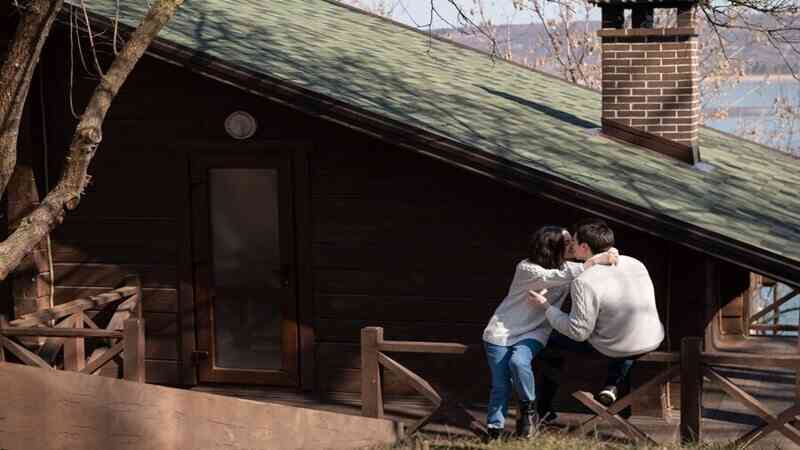Maintaining a roof isn’t something most homeowners think about every day. However, ignoring the signs of wear and tear can lead to major expenses down the road. That’s why identifying potential issues early is critical to protecting your home. IronHead Roofing Specialists in Corvallis recommend regular inspections to catch small problems before they become significant ones.
1. Look for Missing or Damaged Shingles
One of the clearest signs of roof trouble is missing or damaged shingles. Heavy winds, storms, and time can cause them to crack, curl, or fall off entirely. These shingles serve as a barrier against moisture, so when they’re compromised, water can seep into your home. Regularly check for uneven areas or any parts of your roof where shingles seem out of place.
2. Inspect for Granule Loss
If you notice dark spots or bare patches on your roof, this could signal granule loss. Granules are essential for protecting shingles from the sun’s UV rays. Over time, they may wear away, leaving your roof more vulnerable to damage. You might also find granules collecting in your gutters, which is a telltale sign that your shingles are deteriorating.
3. Watch for Leaks Inside Your Home
Water stains on ceilings or walls are often the first signs of a roof leak. Even a small leak can cause significant structural damage if left unchecked. Moisture buildup can lead to mold growth, rotting wood, and insulation problems, all of which can be costly to repair. If you spot any damp patches, investigate immediately.
4. Examine the Roof’s Flashing
Flashing is the metal material used around chimneys, vents, and other protrusions on your roof. It serves to direct water away from these vulnerable areas. If flashing becomes cracked or loose, water can easily seep underneath, causing leaks. Regularly inspect these areas to make sure the flashing is secure and intact.
5. Check the Gutters
Your gutters play a vital role in directing rainwater away from your roof and foundation. Clogged or damaged gutters can cause water to back up, leading to water damage on the roof. Look for signs of rust, sagging, or debris buildup in your gutters. Keeping them clean and well-maintained ensures they function properly.
6. Sagging Rooflines
A sagging roofline is a serious red flag. It usually indicates structural damage, often caused by water infiltration or the weight of snow and debris. If your roof appears to be dipping or uneven in any area, it’s essential to address this issue immediately. A sagging roof can collapse if not repaired promptly, leading to extensive damage.
7. Look for Mold or Moss Growth
Mold and moss are not only unsightly but can also signal underlying issues with moisture. When moss or algae take hold on a roof, they can trap water, leading to further deterioration of the shingles. In damp climates, moss can grow quickly, so it’s important to remove it regularly and investigate the cause of excessive moisture.
8. Cracks in the Chimney
Chimney cracks may not seem directly related to your roof, but they can be a major problem if water gets into those cracks. Over time, it can damage both the chimney and the roof around it. Look for any signs of wear and tear in the mortar or bricks of your chimney and have them repaired if needed.
9. Inspect Skylights
Skylights can add a beautiful touch to any home, but they also represent a weak point in your roof. Poorly installed or aging skylights can let in water, causing leaks and damage around the surrounding area. Regularly check the seal around the skylight and the frame for signs of moisture or drafts.
10. Age of the Roof
Most roofs have a lifespan of 20 to 25 years, depending on the materials used. If your roof is nearing this age, it’s a good idea to have it inspected by a professional, even if there are no visible issues. Aging materials may no longer provide the protection they once did, making your home more susceptible to damage.
11. Animal Activity
If you notice birds, squirrels, or other animals frequently on your roof, this could signal a potential problem. Small animals can damage shingles or find ways into your attic, where they can cause further destruction. Look for nests, droppings, or any unusual activity around your roof.
12. Check the Attic
Sometimes, roof damage isn’t visible from the outside. Checking your attic can provide additional clues. Look for damp insulation, visible beams, or any signs of water stains. These could all point to roof issues that need immediate attention. Be proactive in inspecting your attic, especially after storms or heavy rain.
13. Professional Inspection
While homeowners can spot many of these early warning signs, some issues may require a more trained eye. Regular professional roof inspections are a wise investment to catch potential problems that aren’t immediately apparent. Professionals have the tools and experience to spot even subtle signs of wear.
Taking Preventative Action
By addressing these signs early, homeowners can avoid costly repairs down the line. Roof damage may start small, but if left unattended, it can lead to significant structural issues, water damage, and even the need for a full roof replacement. Make it a habit to inspect your roof after storms, at the change of seasons, or if you notice any signs of damage.
IronHead Roofing Specialists in Corvallis emphasize the importance of staying on top of roof maintenance. Small actions, such as clearing debris, fixing damaged shingles, or resealing flashing, can make a big difference in prolonging the life of your roof and avoiding expensive repairs.
In conclusion, regular roof maintenance can save you time, money, and stress. Identifying problems early is the key to preventing them from becoming larger and more costly. Be proactive and take steps to protect your home from roof damage.
For more info visit Business Stylish
